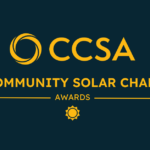When the lower house of the California State Legislature passed a bill last week aimed at fighting climate change by expanding access to community solar, it wasn’t just a victory for the future of renewable energy. The legislation — which calls for 51 percent of the power generated by the new community solar program to benefit low-income customers or service organizations — was also a major win for energy equity.
The bill passed by the California State Assembly, AB 2316, would create one of the nation’s most equitable community solar programs. Next, it must pass the Democrat-controlled Senate, be agreed upon by both chambers, and eventually be signed into law by Gov. Gavin Newsom.
The bill is the latest sign of the growing role community solar can play on closing the energy equity gap. The Pacific Northwest National Laboratory defines an equitable energy system as “one where the economic, health, and social benefits of participation extend to all levels of society, regardless of ability, race, or socioeconomic status. Achieving energy equity requires intentionally designing systems, technology, procedures, and policies that lead to the fair and just distribution of benefits in the energy system.” Across the country, more states are looking at how they can craft legislation and industry standards to include more lower- and middle-income customers in the energy transition.
“Clean energy companies have broadened their perspectives,” said Richard Caperton, Vice President of Policy and Market Development for the clean energy tech company Arcadia. In recent years, industry leaders started looking at how they can address the climate crisis in a holistic way.
“There’s an awareness that social justice just doesn’t happen without climate justice,” he said.
But Caperton said that making community solar more accessible is also key to meeting the promise that the industry holds: it’s a way for everybody to reap the monetary and environmental benefits of clean energy.
“We’re only going to be able to live up to that promise by delivering community solar to everyone,” he said.
Many rooftop solar customers have historically been businesses and high-earning households, which can generally pay upfront costs or meet financial requirements. Experts say that leaves out those who stand to benefit most from access to renewable energy and lower utility bills.
For industry leaders, changing that narrative means looking at the demographics of those living in community solar states, as well as the infrastructure — such as rental properties that don’t allow tenants to install rooftop panels — that has limited community solar’s reach.
For policy makers, it means shaping legislation to mandate access to more lower- and middle-income customers, and consider the barriers that have excluded some communities, such as requiring onerous proof of income or credit checks.
“If you want to expand access to these customers, you can’t make it harder for them to sign up,” Caperton said. “You can’t ask people to show their tax returns.”
Here’s how states are turning these goals into action:
As the nation’s top community solar market, New York has set ambitious goals. Governor Kathy Hochul has released a roadmap calling to deliver 35 to 40 percent of the benefits from those investments to disadvantaged communities and low-to moderate- income residents, and the state has approved $52.5 million for community solar projects for underserved communities. Programs will save customers at least 10 percent on their electric bills and reduce operating costs for affordable housing and nonprofits serving disadvantaged communities, and award incentives for projects in neighborhoods that are already burdened by proximity to traditional power plants.
New Jersey Gov. Phil Murphy has said he wants to make the state’s community solar pilot program “a national model for clean energy equity and environmental justice.” Projects approved by the New Jersey Board of Public Utilities will allocate at least 51 percent of their capacity to low- and moderate-income participants, and they will all be located on landfills, brownfields, or rooftops.
The Maryland Public Service Commission is moving forward on a community solar pilot program focused on providing renewable energy benefits for low- and moderate-income customers. The nation’s largest community solar farm fully dedicated to low- and moderate-income residents is being constructed in Montgomery County, where Ameresco and community solar company Neighborhood Sun are transforming underutilized land into a solar array to which renters, residents of multi-unit buildings, non-profits and businesses can subscribe.
In Illinois, community solar is expected to play a key role in helping achieve ambitious climate equity goals laid out in a historic omnibus energy package that passed last year. The plan aims to remove barriers to solar for low-income residents by creating new customer classes for renters, allocating funding to address issues such as outdated electrical panels, and better marketing of the program to low-income residents.




